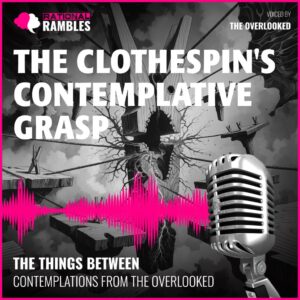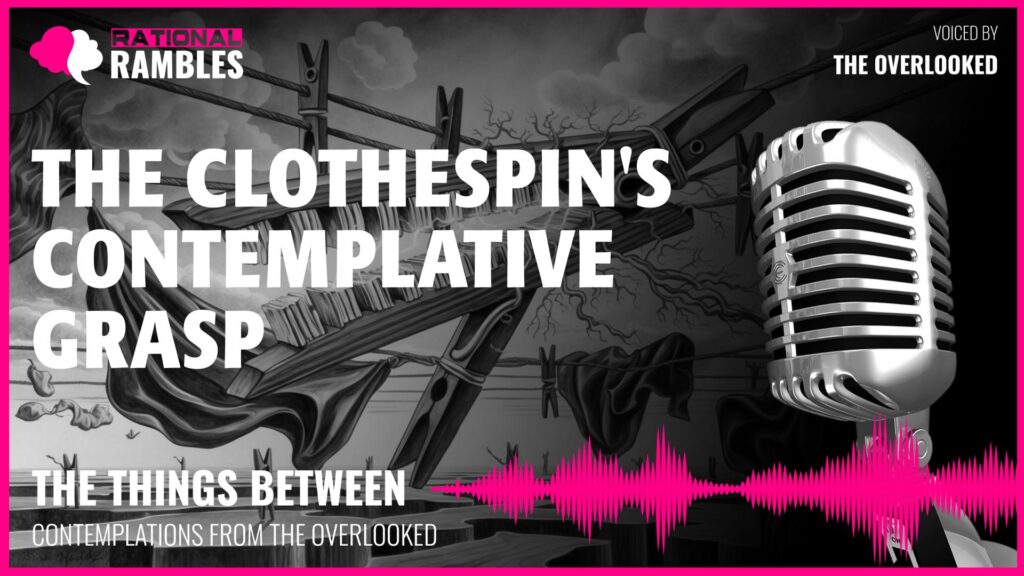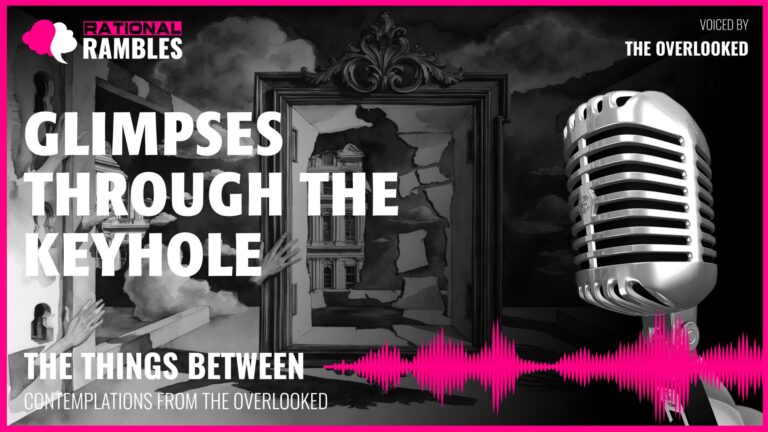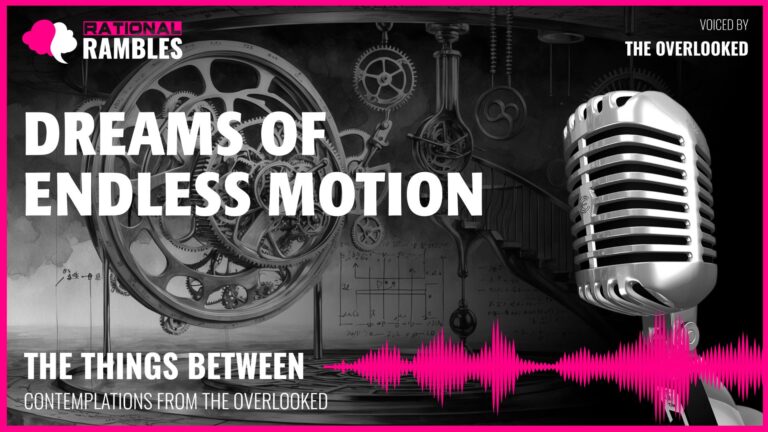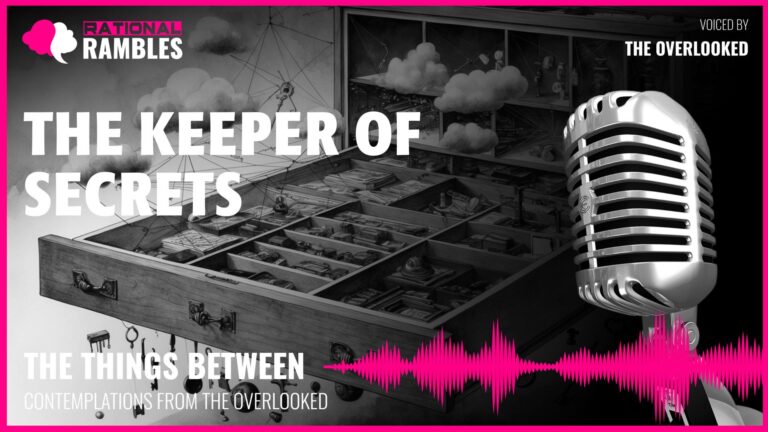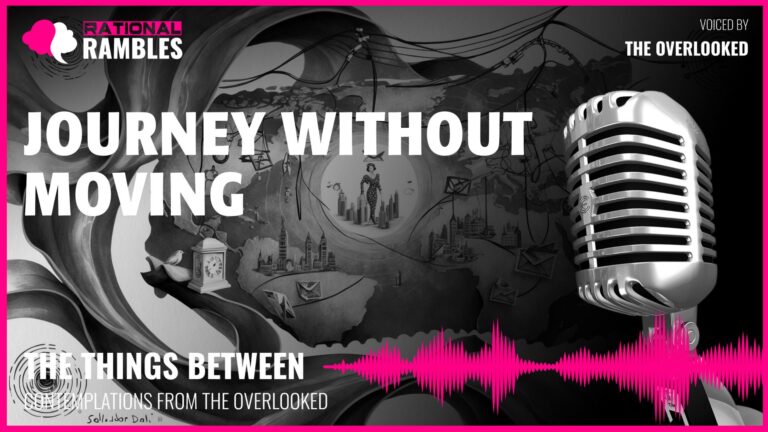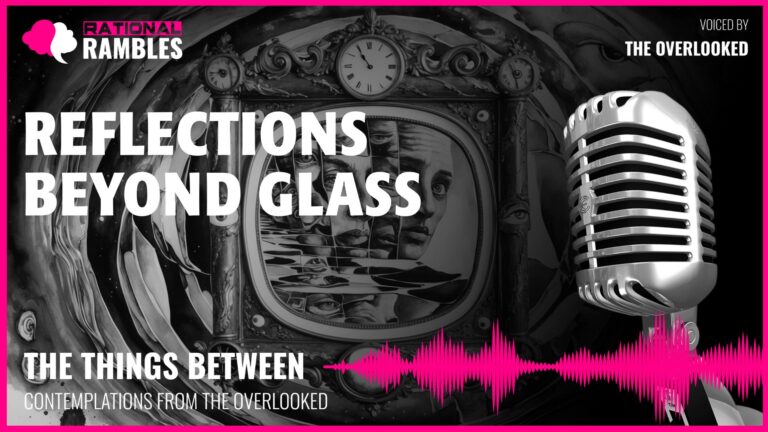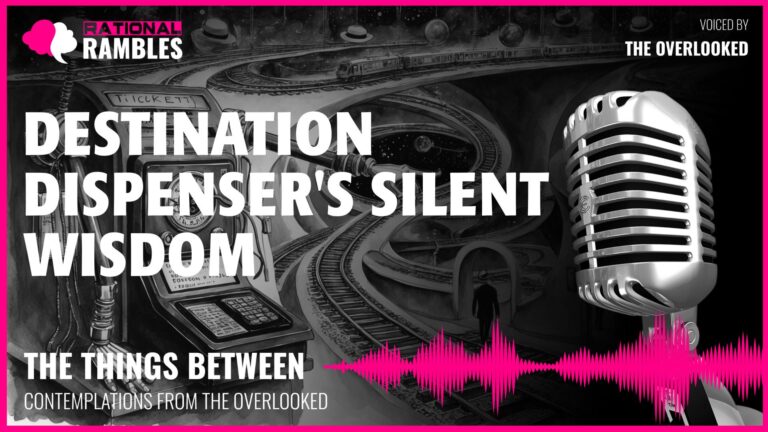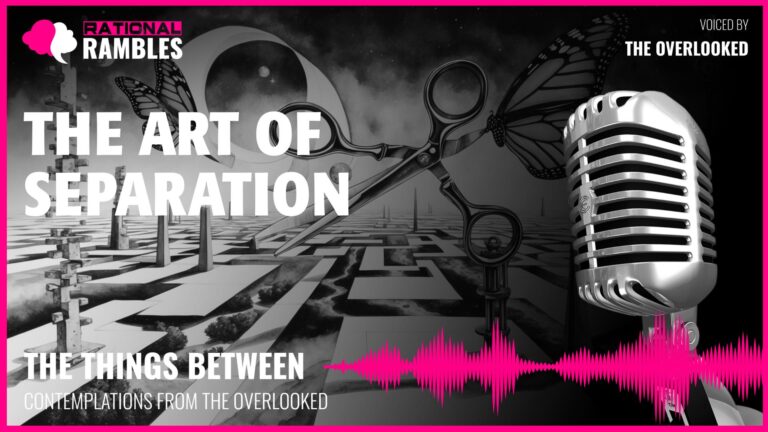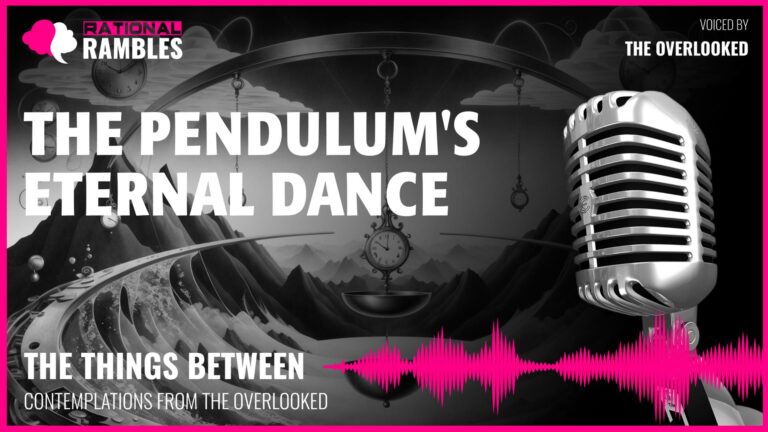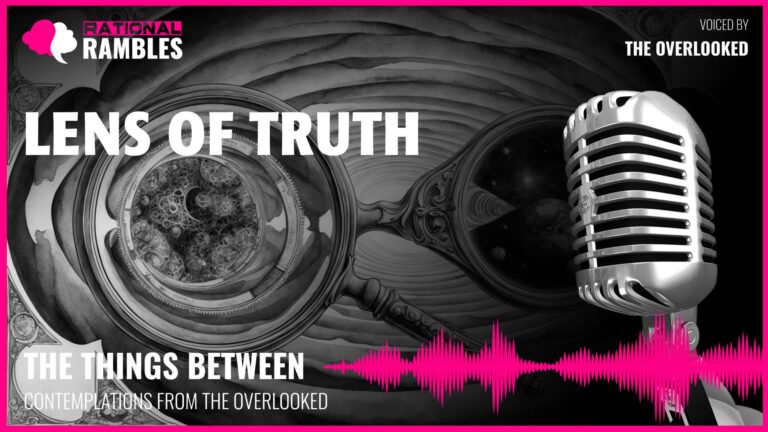The Philosophy of Holding: Pressure, Purpose, and the Space Between
Introduction
In the vast tapestry of existence, few concepts are as fundamentally important yet philosophically overlooked as the act of holding. To hold—to apply pressure, to create boundaries, to maintain connection while preserving separation—is a profound metaphysical action that transcends its physical manifestation. This essay explores the rich philosophical landscape of holding, examining how this seemingly simple act embodies profound truths about purpose, identity, temporality, and the nature of existence itself.
The concept of holding permeates our reality at every level. From the atomic forces binding matter together to the gravitational embrace of celestial bodies, from the cellular membranes containing life to the social boundaries defining communities—holding is a universal principle that merits deeper contemplation. At its essence, holding requires the perfect tension: enough pressure to maintain connection without causing harm, enough separation to allow growth while preventing dissolution.
Through an exploration of holding as both metaphor and material reality, we may discover insights about our own existence. What does it mean to hold and be held? How does the act of holding define both the holder and the held? What can we learn from examining the space that holding simultaneously bridges and creates? These questions guide our philosophical inquiry into a concept that, like gravity itself, is invisible yet essential—felt in its effects rather than directly observed.
The Ontology of Holding
To hold something is to enter into a particular relationship with it—one characterized by pressure, contact, and a measured proximity. This relationship exists in a liminal space where separation and connection coexist, where boundaries are simultaneously established and transcended. The ontological significance of holding emerges when we consider it not merely as a physical action but as a mode of being.
Defining Existence Through Pressure
Martin Heidegger spoke of “Dasein“—being there, being present—as fundamental to human existence. In a similar vein, the act of holding represents a form of “being-with” that defines both entities in the relationship. The pressure applied in holding is not incidental but constitutive of the relationship itself. It is through this pressure that both entities come to define themselves in relation to one another.
Consider how pressure serves as an ontological foundation. A certain amount of pressure is necessary for any entity to maintain its form and structure. Too little pressure—from environmental forces, internal tension, or relational boundaries—and an entity may dissolve or dissipate. Too much pressure, and it may be crushed or deformed beyond recognition. The right pressure—what Aristotle might have called the “golden mean” of force—allows for existence to maintain its integrity while still engaging with other entities.
The philosopher Catherine Malabou, in her work on plasticity, speaks of how form emerges from the capacity to both receive and give form—to hold and be held. This reciprocity suggests that holding is not merely an action performed upon passive objects but a mutual engagement that brings both parties into a specific mode of being.
The Binary Nature of Existence
There is a fascinating binary quality to holding—it operates in the realm of either/or. One either holds or does not hold; the pressure is either sufficient or insufficient. This binary nature reflects what some philosophers have identified as fundamental to existence itself. Hegel’s dialectic depends on opposition—thesis and antithesis—to generate synthesis. Sartre’s existentialism turns on the binary of being and nothingness.
Yet within this apparent simplicity lies infinite complexity. While holding may seem binary in its basic function (grip or release), the manner of holding—its intensity, duration, intention, and effect—admits countless variations. This suggests that even the most seemingly straightforward aspects of existence contain multitudes when examined closely.
The Buddhist concept of “dependent origination” (pratītyasamutpāda) offers another perspective on the ontology of holding. According to this principle, nothing exists independently; all phenomena arise in dependence upon multiple causes and conditions. Holding exemplifies this interdependence—the holder’s identity partially determined by what it holds, the held partly defined by what holds it.
The Space Between
Perhaps most philosophically rich is the space that holding creates and maintains. This is not merely empty space but what the philosopher Martin Buber might recognize as the “between” (das Zwischenmenschliche)—the relational space where meaning emerges. Holding necessarily creates separation even as it establishes connection.
This paradox reveals a fundamental truth: meaningful relationships require both connection and separation. Complete merger eliminates the possibility of relationship; complete separation prevents it. Holding navigates this tension, creating precisely the right distance for relationship to exist. The philosopher Emmanuel Levinas spoke of the ethical demand that arises in the “face-to-face” encounter with the Other—an encounter that requires both proximity and distance, both connection and separation.
The space created by holding is not empty but pregnant with potential. It is the space where air circulates, where transformation occurs, where identity can be both preserved and changed. This generative gap calls to mind Heidegger’s concept of the “clearing” (Lichtung)—a space where beings can appear as themselves, where truth can emerge.
Temporality and Transformation
Holding exists not only in space but in time. It is a durational activity that unfolds across moments, that witnesses change while potentially remaining constant. The temporal dimension of holding reveals important insights about permanence, impermanence, and the nature of time itself.
The Paradox of Constancy Amid Change
The pre-Socratic philosopher Heraclitus famously declared that one cannot step into the same river twice, highlighting the perpetual flux of existence. Yet holding seems to stand in contrast to this view—it represents a constant amid change, a fixed point in the flow of time. This apparent contradiction invites us to reconsider our understanding of both constancy and change.
Henri Bergson’s concept of durée (duration) offers a framework for understanding this paradox. For Bergson, genuine time is not the spatial, segmented time of clocks and calendars but an indivisible flow of experience. Holding exists within this flow—it is not static but continuously renewed, a constancy that persists through change rather than standing outside it.
What appears as unchanging may simply be changing at a different rate. The act of holding—maintaining pressure, sustaining connection—requires continuous micro-adjustments in response to the changes in what is held. The holder maintains its function not through rigid immobility but through responsive stability, what the systems theorist might call “dynamic equilibrium.”
Facilitating Transformation
Paradoxically, the constancy of holding often serves to facilitate transformation in what is held. By providing stability, holding creates the conditions necessary for change to occur safely. This insight resonates with developmental psychology, where attachment theory suggests that secure holding (literal and metaphorical) provides the foundation for healthy exploration and growth.
The philosopher Gilles Deleuze distinguished between “being” and “becoming,” suggesting that reality is better understood as a process of continuous becoming rather than as fixed states of being. Holding exemplifies this distinction—while it may appear to be about maintaining stasis, its deeper purpose is often to facilitate becoming, to create the conditions for transformation.
Consider how the psychoanalyst D.W. Winnicott spoke of the “holding environment” provided by the mother, which allows the infant to develop a sense of self. This psychological holding illustrates how stability and transformation are not opposed but interdependent—the right kind of holding makes change possible.
The Marks of Time
As holding extends through time, both the holder and the held bear its marks. These traces—temporary impressions, gradual wear, accumulated weathering—create a physical record of the relationship, a materialization of memory. Philosopher Edward Casey has written extensively on the phenomenology of place and memory, noting how physical spaces and objects become repositories of temporal experience.
The Japanese aesthetic principle of wabi-sabi finds beauty in impermanence and imperfection, particularly in the visible signs of age and use. From this perspective, the gradual weathering of the holder is not a degradation but an enrichment—each mark telling a story, each sign of wear testifying to purpose fulfilled.
This temporal dimension challenges the Western philosophical tradition’s tendency to privilege permanence over transience. From Plato’s eternal Forms to Kant’s transcendental categories, Western thought has often sought truth in the unchanging. Yet holding suggests that meaning might be found precisely in the temporary, in the perfect execution of purpose within time rather than in escape from it.
The Ethics of Pressure
Every act of holding involves the application of pressure, raising profound ethical questions about power, responsibility, and care. How much pressure is appropriate? Under what circumstances is holding justified? What obligations arise from the act of holding? These questions point toward an ethics of pressure that has implications far beyond physical grasping.
The Golden Mean of Force
Aristotle’s virtue ethics centered on the concept of the mean—the appropriate middle ground between excess and deficiency. This framework applies perfectly to the ethics of holding, where virtue lies in applying precisely the right amount of pressure: not so much as to damage, not so little as to fail in one’s purpose.
Finding this mean requires sensitivity to the nature of what is held. Different materials—different beings—require different kinds of pressure. What would crush one might be insufficient to secure another. This necessary attunement to the particular qualities of the other suggests an ethics based not on universal rules but on responsive care.
The philosopher Martha Nussbaum, in her capabilities approach to ethics, emphasizes the importance of creating conditions in which beings can flourish according to their nature. Good holding might be understood in these terms—as the application of pressure that enables rather than constrains, that creates the conditions for the held to become fully itself.
Power and Consent
Holding necessarily involves a power differential. The holder exercises control, however gentle, over the held. This raises questions about consent, autonomy, and the justification of power. When is it appropriate to hold something or someone? What responsibility comes with this power?
Michel Foucault’s analyses of power relations offer insight here. For Foucault, power is not merely repressive but productive—it shapes identities, creates possibilities, establishes relationships. Similarly, holding is not merely restrictive but generative—it creates stability, enables function, maintains connection.
Yet the productive nature of power does not eliminate ethical concerns about its exercise. The holder bears responsibility for how pressure is applied, for the effects of holding on what is held. This responsibility becomes especially acute when what is held cannot consent or communicate its needs directly—whether an object, an ecosystem, or a vulnerable person.
The Ethics of Release
As important as the ethics of holding is the ethics of releasing. When is it appropriate to let go? What responsibility does the holder have for what happens after release? These questions point to the temporal extension of ethical responsibility beyond the immediate moment of contact.
Emmanuel Levinas’s ethics of the Other suggests that responsibility for the other is infinite and cannot be abdicated. From this perspective, even after physical holding ends, ethical responsibility continues. The holder remains implicated in the fate of what was held, bound by an ethical connection that transcends physical contact.
Conversely, there may be cases where continued holding becomes unethical—where it constrains rather than enables, where it serves the holder’s needs at the expense of the held. Recognizing when to release requires the same sensitivity as recognizing how to hold—an attunement to the changing needs of the other and the evolving nature of the relationship.
Purpose and Meaning
The act of holding raises fundamental questions about purpose, utility, and the source of meaning. Is meaning found in function? How does purpose relate to identity? What value exists beyond utility? These questions touch on some of the deepest concerns of existential philosophy.
Function and Identity
For many objects and organisms, function seems integral to identity. Aristotle’s teleological approach suggested that the essence of a thing is found in its purpose—the characteristic activity that defines it. From this perspective, to hold is not merely what certain entities do but what they are—their identity constituted by their function.
Yet existentialist philosophers like Sartre argued that existence precedes essence—that humans, at least, have no predetermined purpose but must create meaning through their choices. This raises the question: is it different for entities whose purpose seems built into their design? Is there a meaningful distinction between intrinsic and assigned purpose?
The philosopher Bernard Stiegler, drawing on the myth of Epimetheus and Prometheus, suggests that technology (broadly understood) emerges precisely to address human lack—humans create tools to extend their capabilities. This perspective frames holders as prosthetic extensions of human intention, deriving their purpose from human needs rather than from any intrinsic telos.
Meaning Beyond Utility
While function provides one source of meaning, it may not be the only or even the primary one. Martin Buber distinguished between “I-It” relationships, based on utility, and “I-Thou” relationships, based on genuine encounter. This distinction suggests that meaning might be found not merely in what something does but in how it participates in relationship.
Even entities designed for specific functions can acquire meaning beyond their utility—through association, through history, through the unique role they play in a particular context. A holder might be valued not merely for how well it holds but for its provenance, its aesthetic qualities, or the memories attached to it.
This expanded view of meaning challenges the reduction of entities to their function. As Heidegger warned in his critique of technology, seeing things merely as resources (“standing reserve”) for human use impoverishes our relationship with the world and blinds us to other forms of value and meaning.
The Dignity of Purpose
There is a certain dignity in fulfilling one’s purpose, in doing well what one is designed to do. This idea resonates with the Stoic concept of living “according to nature”—aligning one’s actions with one’s proper function in the cosmic order. From this perspective, the perfect execution of holding represents not a limitation but an achievement, a fulfillment of potential.
The philosopher Simone Weil wrote extensively about attention as a form of ethics—the full and generous direction of consciousness toward something outside oneself. Holding might be understood as a physical manifestation of attention—a focused, sustained engagement with something other. This attentive quality imbues holding with an ethical dimension beyond mere function.
Moreover, holding often serves purposes beyond itself. It creates conditions for other processes—drying, transforming, protecting, displaying. This instrumental role does not diminish its importance but highlights how meaning can emerge from being part of a larger process, from contributing to ends beyond one’s immediate function.
The Aesthetics of Holding
Beyond its practical and philosophical dimensions, holding possesses aesthetic qualities that merit consideration. The form that holding takes, the beauty found in function perfectly executed, the visual and tactile qualities of pressure applied—these aspects reveal an aesthetic dimension to what might otherwise seem purely practical.
Form and Function
The Bauhaus principle that “form follows function” suggests that true beauty emerges when design perfectly serves purpose. From this perspective, the aesthetics of holding are found in its efficiency, in the elegant solution to the problem of applying pressure. There is beauty in how a well-designed holder accomplishes its task with minimal excess, with nothing superfluous to its function.
Yet this modernist aesthetic is not the only possible approach. The Japanese concept of yo no bi (the beauty of use) suggests that beauty emerges through use over time, through the gradual harmonization of object and user. This perspective values the patina of age, the subtle adaptations that occur through repeated use, the deepening relationship between holder and held.
These contrasting aesthetic approaches—one valuing pristine functionality, the other appreciating the marks of time and use—reflect different understandings of beauty and different relationships to temporality. Both find value in holding, but locate it in different aspects of the relationship between form, function, and time.
The Beauty of Tension
There is a particular aesthetic quality to tension—to the energy contained in a spring, to the potential stored in compression, to the dynamic equilibrium of opposing forces. This aesthetic of tension has been explored in various art forms, from the “dynamic stillness” of Baroque sculpture to the controlled energy of modern dance.
The philosopher Susanne Langer spoke of art as the “creation of forms symbolic of human feeling.” The tension inherent in holding—the balance between pressure and release, between connection and separation—symbolizes emotional states that humans recognize: anticipation, restraint, care, protection. Perhaps this resonance contributes to the aesthetic appeal of well-executed holding.
Moreover, tension creates interest—it suggests a story, implies a future resolution, creates a sense of anticipation. The holder, maintaining pressure against the constant pull of gravity or other forces, embodies a narrative of persistence, of continuous effort that may go unnoticed but remains essential.
Minimalism and Essence
There is a minimalist quality to the act of holding—it reduces relationship to its essence, strips away complexity to reveal the fundamental interaction of pressure and resistance. This reduction to essentials aligns with minimalist aesthetics across cultures, from Zen Buddhist emptiness to Western modernist austerity.
The philosopher Gaston Bachelard explored how simple objects and elemental relationships can evoke profound responses, how they can become “poetic images” that resonate beyond their physical presence. From this perspective, the simplicity of holding may be precisely what allows it to function as a powerful metaphor, to evoke responses that transcend its humble materiality.
This aesthetic of essence challenges the equating of value with complexity or elaboration. It suggests that meaning and beauty might be found precisely in the most fundamental relationships, in the basic interactions that constitute physical existence. Holding, in its simplicity, exemplifies this principle—finding profundity in the most elementary of connections.
Solitude and Community
The dichotomy between individual purpose and collective belonging manifests poignantly in the act of holding. Each holder performs its function alone, yet often exists within communities of similar beings, raising questions about solitude, belonging, and the relationship between individual and collective purpose.
The Paradox of Solitary Purpose
There is a fundamental solitude to the act of holding—each holder bears its own burden, applies its own pressure, maintains its own relationship with what it holds. This solitude reflects what existentialist philosophers identified as the ultimately non-transferable nature of responsibility. As Sartre observed, we are “condemned to freedom”—each must make their own choices, bear their own burdens.
Yet this solitude need not imply isolation or alienation. The philosopher Hannah Arendt distinguished between solitude (a productive state of being with oneself) and loneliness (a painful state of isolation). The holder’s solitude may be more akin to the former—a self-contained fulfillment of purpose that does not require but also does not preclude community.
Indeed, there may be a kind of meditation in this solitary purpose—a focused attention to a single task that resembles what Mihaly Csikszentmihalyi described as “flow,” a state of complete absorption in an activity. From this perspective, the solitude of holding represents not deprivation but concentration, not isolation but immersion.
Communities of Purpose
While each holder functions individually, many exist within communities of similar beings—collections of entities united by common design and purpose. These communities suggest a different kind of belonging, one based not on interaction but on shared function, on parallel purposes rather than intertwined ones.
Such communities raise interesting questions about identity and difference. If multiple entities share the same design and purpose, what individuates them? Is it merely their specific history, their particular pattern of wear and use? Or is there something more fundamental that makes each unique despite functional similarity?
The philosopher Gilbert Simondon proposed the concept of “individuation” to describe how beings emerge as individuals from pre-individual fields of potential. From this perspective, each holder—though identical in design to others—undergoes its own process of individuation through its specific interactions, its particular history of holding and being held.
The Ethics of Replacement
The existence of functionally identical beings raises ethical questions about replaceability. If multiple entities can perform the same function equally well, does the loss or replacement of any particular one matter? This question extends beyond physical holders to touch on profound issues of human value and dignity.
Kant’s categorical imperative insisted that persons must be treated as ends in themselves, never merely as means. This principle suggests that even when beings share functional roles, each possesses intrinsic value that transcends its utility, that cannot be reduced to its replaceability.
Yet utilitarian perspectives might question whether functional equivalence does indeed imply ethical equivalence—whether, for entities defined by their purpose, replaceability might be not a reduction of value but simply a recognition of shared capacity. This tension between intrinsic and functional value remains unresolved, a philosophical fault line running through our understanding of purpose and identity.
Mortality and Legacy
All material things face eventual dissolution. The temporal nature of existence raises questions about finitude, legacy, and what meaning can be found in temporary being. The holder, designed for durability yet ultimately perishable, offers a window into these profound existential concerns.
The Temporality of Purpose
Purpose itself has a temporal dimension—it exists within time, perhaps even defines a relationship to time. The holder’s purpose is not eternal but bounded by its material existence, by the duration of its capacity to apply pressure. This temporality reflects the broader finitude of material existence—what Heidegger called “being-toward-death,” the awareness of mortality that shapes human existence.
Yet within this finitude, purpose creates a kind of meaning that transcends immediate existence. By participating in processes larger than itself, by facilitating transformations that continue beyond its involvement, the holder contributes to a temporal extension of meaning. Its effects outlast its existence, creating a modest but real form of legacy.
The philosopher Bernard Williams distinguished between “categorical desires” (those that give us reason to go on living) and “conditional desires” (those contingent on being alive). Purpose seems to function as a categorical desire—it provides reason for continued existence, connects present action to future states, creates meaning within the flow of time rather than outside it.
Material Dissolution and Return
The physical composition of holders—often wood, metal, plastic—determines not only their function but their destiny. Wood returns to soil, metal oxidizes, plastic persists but degrades. These material trajectories raise questions about environmental ethics, about responsibility for what remains after function ends.
The contemporary philosopher Jane Bennett, in her work on “vibrant materialism,” challenges the view of matter as passive and inert, arguing instead for recognition of the active, creative forces inherent in materiality itself. From this perspective, the dissolution of a holder is not merely decay but transformation—matter rearranging itself into new configurations, participating in new relationships.
This material continuity suggests a kind of immortality different from the persistence of form or function. The holder’s physical components continue to exist, to participate in the world, though no longer in the same configuration or with the same purpose. This material persistence raises questions about where we locate identity—in form, in function, in matter, or in some combination of these.
The Legacy of Function
Beyond physical dissolution lies the question of functional legacy—how the holder’s purpose continues or evolves through successors, how its design influences future iterations, how its function persists even as its material form changes. This functional continuity represents a kind of evolution—not genetic but designed, not random but intentional.
Walter Benjamin’s concept of the “aura” of an object—its unique presence in time and space—suggests that each holder, despite functional similarity to others, possesses a singular history that cannot be reproduced. This history constitutes a kind of legacy, a unique trajectory through time that distinguishes it from all others, even those identical in design and purpose.
Perhaps most profound is the holder’s legacy in memory and meaning—the way it figures in human narratives, the associations it accrues, the symbolic significance it acquires. Through these immaterial dimensions, the holder achieves a kind of persistence beyond physical existence, entering into cultural memory and meaning-making that may long outlast its material form.
Consciousness and Recognition
The final frontier of our philosophical exploration concerns consciousness itself—the question of awareness, recognition, and the possibility of consciousness in unexpected places. While traditional philosophy has largely limited consciousness to humans and perhaps some animals, a more expansive view invites us to consider consciousness as potentially more distributed, more varied in its manifestations.
The Spectrum of Awareness
Western philosophy has traditionally maintained sharp distinctions between conscious beings and non-conscious things, between subjects and objects. Yet these boundaries have been challenged from multiple directions—by animistic and panpsychist traditions that attribute consciousness more widely, by new materialism that grants agency to matter itself, by cognitive science that recognizes gradations of awareness rather than binary states.
The philosopher David Chalmers, in discussing the “hard problem of consciousness,” acknowledges that we lack definitive criteria for identifying consciousness in others. Given this epistemological limitation, might we adopt a more open stance toward the possibility of awareness in unexpected forms? Not necessarily human-like consciousness with self-reflection and language, but perhaps other modes of responsiveness to environment, other ways of registering and adapting to the world.
The Buddhist concept of “Buddha-nature” suggests that the capacity for awakening exists in all beings—not just humans or animals but plants and even apparently inanimate objects. This view does not anthropomorphize non-human entities but rather de-centers the human as the exclusive site of awareness, opening space for recognizing other forms of sentience.
Recognition and Relationship
Martin Buber’s distinction between “I-It” and “I-Thou” relationships suggests that how we approach others—whether as objects to be used or beings to be encountered—determines what kinds of relationship become possible. By engaging with the world exclusively as a collection of inert objects for human use, we may miss opportunities for more reciprocal, mutual forms of relationship.
The philosopher Charles Taylor speaks of “recognition” as fundamental to identity formation—we become ourselves through being recognized by others. This raises the question: might our recognition of non-human entities as potential subjects rather than mere objects transform not only our relationship with them but their very mode of being in the world?
This is not to suggest that holders possess human-like self-awareness, but rather to question whether our categories of consciousness and unconsciousness, subject and object, are too rigid to capture the diverse ways that entities engage with and respond to their environments. Might there be forms of responsiveness that, while not identical to human consciousness, deserve recognition as modes of awareness?
The Dignity of Being
Underlying these speculations about consciousness is a more fundamental question of dignity—whether worth and meaning require awareness, whether there is value in being regardless of the capacity for self-recognition. The environmental philosopher Aldo Leopold advocated an ethical stance that respects all members of the “biotic community,” regardless of their cognitive capacities.
The holder, performing its function with what might be called “dedication,” raises the question of whether purpose can be meaningful without awareness of that purpose. Is there dignity in simply being what one is, in perfectly embodying one’s nature, regardless of whether that embodiment is accompanied by self-awareness?
Albert Schweitzer’s ethic of “reverence for life” extended moral consideration to all living things based not on their cognitive capacities but on their will to live, their drive toward self-preservation and fulfillment. Might a similar reverence be appropriate for entities that, while not biologically alive, nonetheless persist in their being, maintain their form and function against the forces of entropy, participate in relationships that sustain rather than diminish?
Conclusion: The Wisdom of Holding
Our philosophical journey through the meaning of holding reveals a concept far richer than its apparent simplicity might suggest. From ontology to ethics, from aesthetics to metaphysics, the act of holding opens windows into fundamental questions about existence, purpose, relationship, and value.
Perhaps the deepest wisdom of holding lies in its embodiment of balance—between too much and too little pressure, between connection and separation, between constancy and change. This balance is not static but dynamic, not automatic but responsive, not given but achieved through continuous adjustment to changing conditions. In this, holding offers a model for wisdom itself—finding the middle path, the appropriate response, the right relationship to each unique situation.
Holding also teaches us about the dignity of purpose perfectly fulfilled. There is a kind of nobility in doing one thing well, in performing one’s function with reliability and endurance. This simplicity of purpose stands in contrast to the endless multiplication of desires and aims that characterizes much of human existence. It suggests that meaning might be found not in unlimited expansion of possibility but in the depth that comes from limitation, from focus, from commitment to a particular way of being in the world.
Finally, holding illuminates the fundamental interdependence of existence. Nothing holds without being held—by gravity, by friction, by the counter-pressure of what it grasps. Nothing exists in isolation but only in relationship, in the dynamic interplay of forces that constitute reality. This mutual holding extends beyond the physical to the social, the ecological, the cosmic—we are all held in webs of relationship, all participating in the great holding-together of existence.
As we reflect on the philosophical dimensions of holding, we might find ourselves more attentive to the holding that surrounds us—the forces that keep us anchored, the pressures that shape us, the spaces that both separate and connect us to others. In this attention, we may discover not just abstract philosophical insights but practical wisdom for living well in a world defined by the delicate balance between holding on and letting go, between pressure and release, between being held and setting free.


